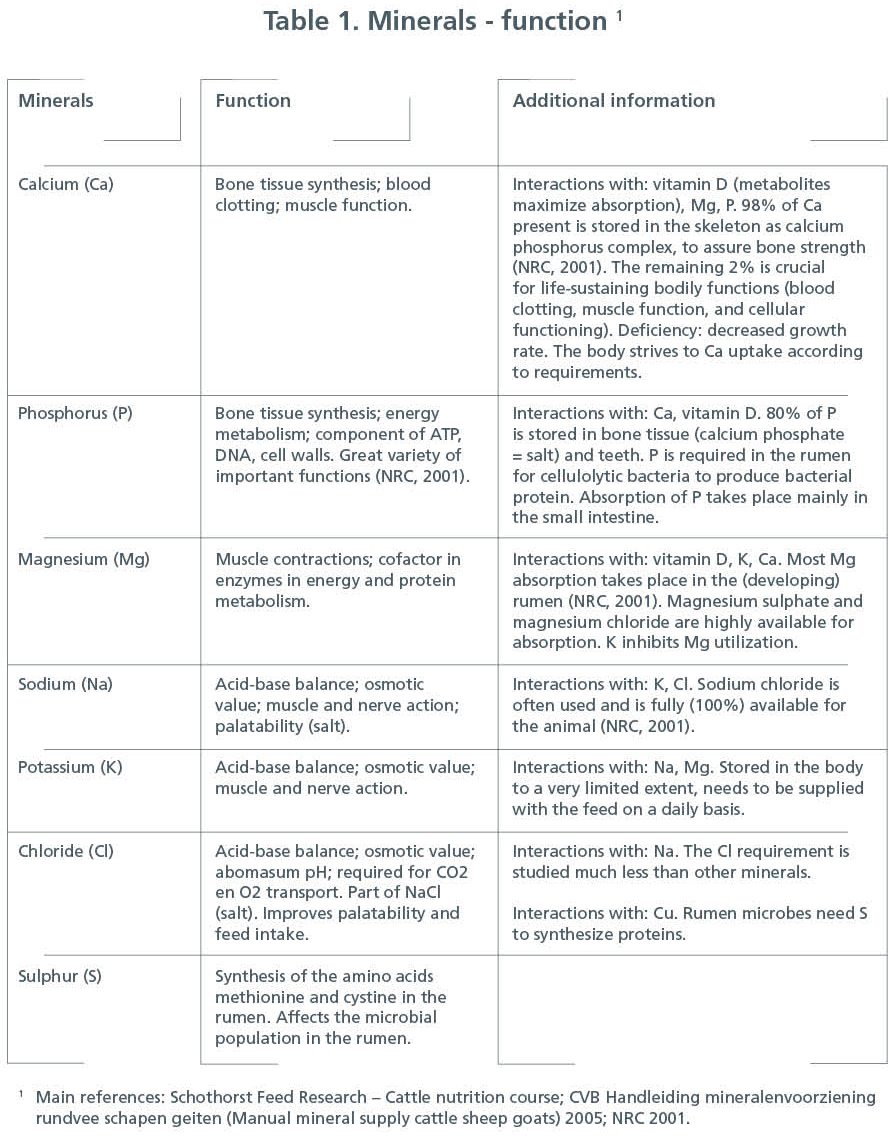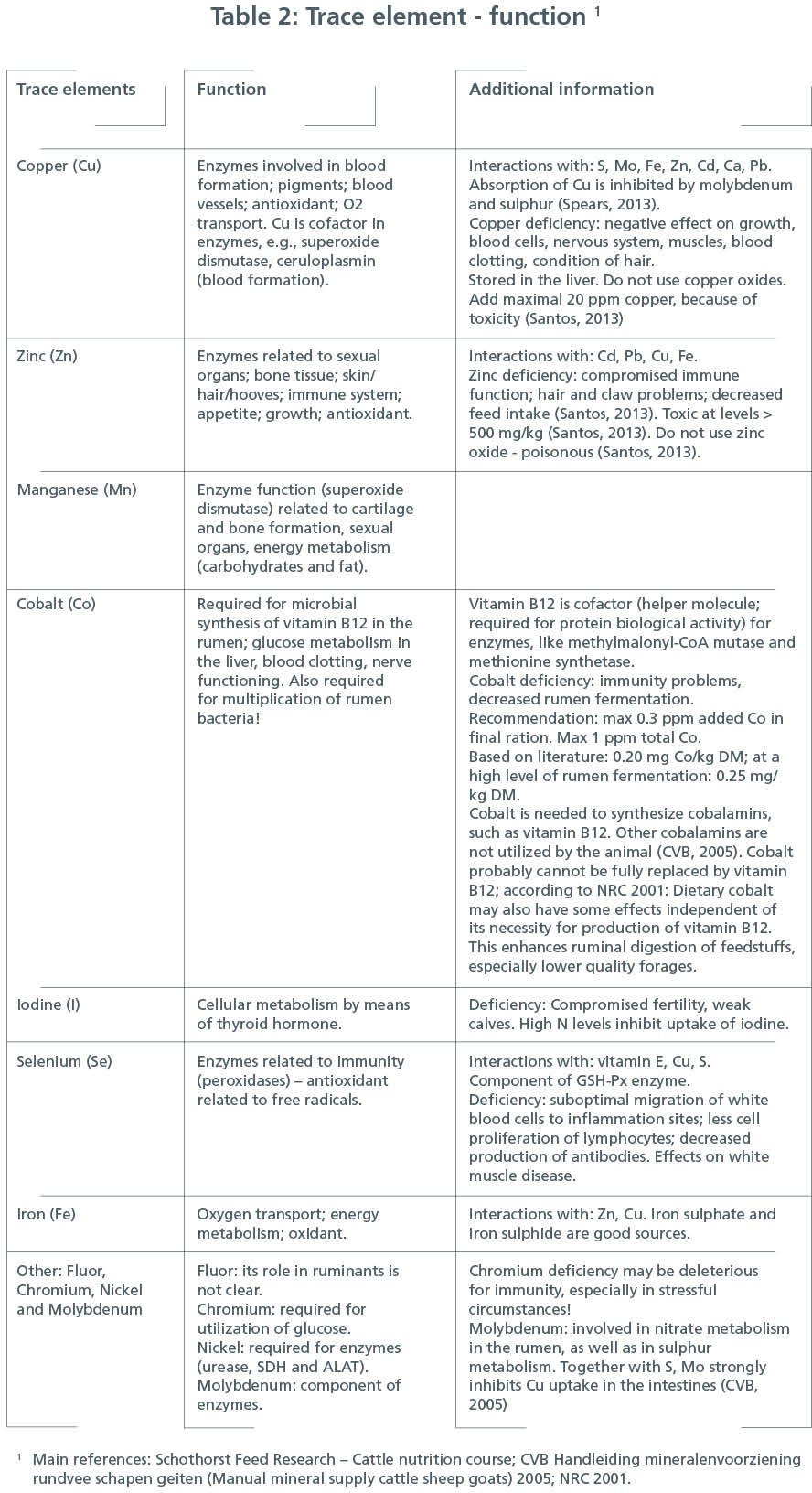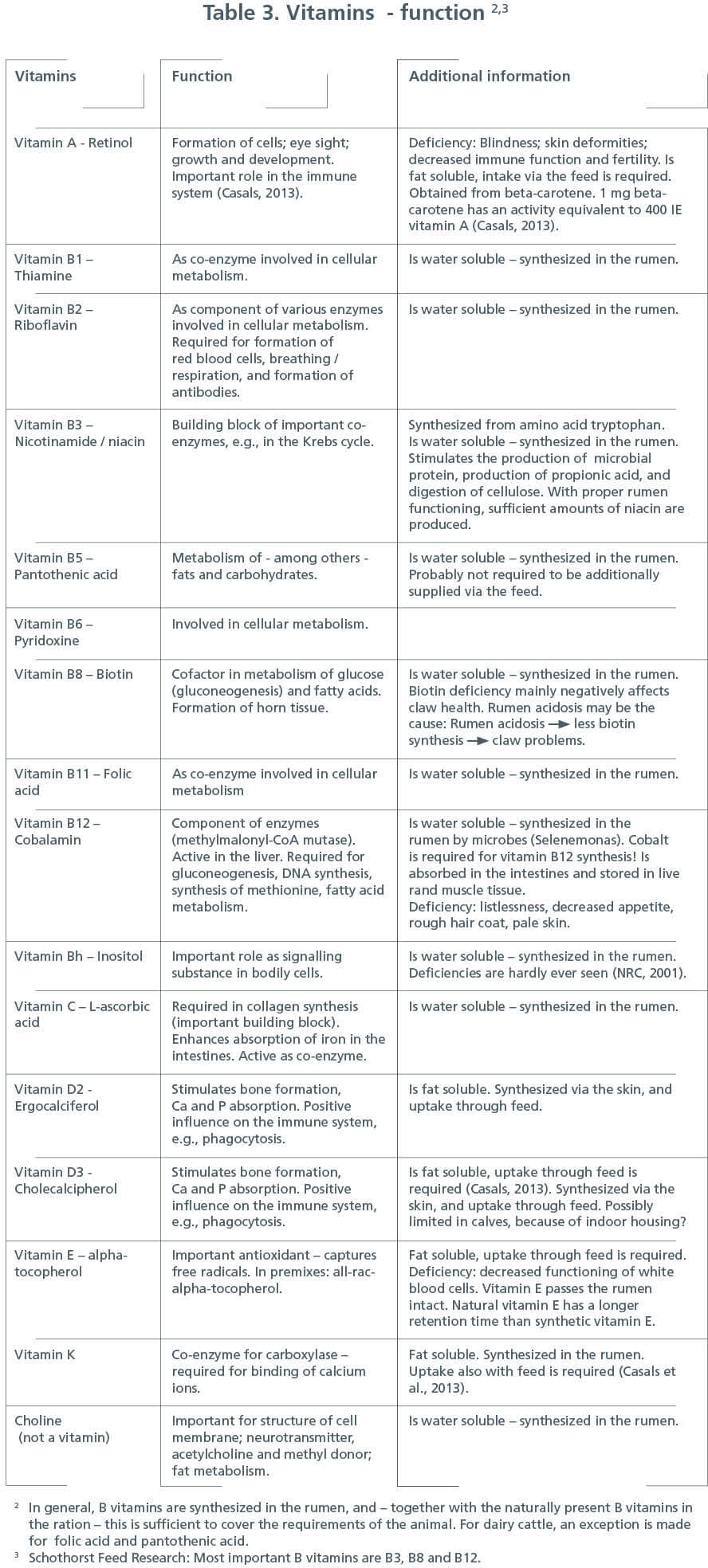Next day delivery
Order before 2:00PM
Free shipping
For orders above €100,-
Safe pay
By iDeal & Klarna
Appropriate rations also include adequate vitamins and minerals. Tables 1 and 2 below describe the main functions of each mineral, trace element and vitamin
Table 1. Minerals and trace elements – function


In general, together with the B vitamins in the feed, B vitamins produced in the rumen are adequate for the animal. For dairy cattle, there is an exception for folic acid and pantothenic acid.
Schothorst: in terms of B vitamins, vit. B3, B8 and B12 are the most important.

Vitamin and mineral deficiencies may already arise at the birth of a calf. Iron is a good example of this. In general, it may be assumed that between 20% and 40% of calves on a dairy farm will be iron deficient. The cause of this is that the calf is born with low iron reserves and milk often contains too little iron to supplement this. But selenium deficiencies also occur from time to time, often because the soil the animals graze on contains too little selenium.
Occasionally young stock are even given surplus feed from the dairy cattle rations. The level of remaining vitamins and minerals in this feed is then unclear, and this can lead to deficiencies in the animals if the feed indeed no longer contains the calculated levels of vitamins and minerals.
